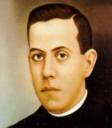St. Francis Xavier and Me
December 3 is the feast of St. Francis Xavier, “Apostle to the East.” Francis Xavier was born in Navarre, Spain in 1506, to a wealthy and influential family. However, his family lost their lands in 1512 when Navarre was conquered by troops from Castille and Aragon. His father died in 1515.
Francis went to study in Paris when he was 19 and met Iñigo (Ignatius) Loyola there. To make a long story short, Francis eventually joined with Loyola as one of the founding members of the Society of Jesus, the Jesuits.
Francis is best known for his missionary work in India, Malacca, Sri Lanka, Indonesia, and Japan. From 1540, until his death on an island off the coast of China in 1552, he traveled and preached throughout the East, frequently returning to Goa in India. He left behind communities of Christians in each place he visited and pioneered the missionary style of the Jesuit order through the compromises he worked out with the existing Christian community, founded by St. Thomas the Apostle, in India.
There are many biographies and studies written about St. Francis Xavier’s life, teachings, influence in the Church, and miracles.
My family has had a close relationship with St. Francis for several generations in the Pacific Northwest. Jesuits were among the first to arrive in eastern Washington and brought with them a devotion to St. Francis. Growing up in parishes staffed by Jesuits, we shared in the tradition of the “Novena of Grace” each year in March. In fact, my parents’ first date ocurred when my father picked up my mother from her teaching assignment in northern Idaho and escorted her to the Novena in Spokane!
As a child, many of my early memories are related to the family tradition of attending Mass and the Novena from March 4-12. Each year we went, with our own prayer requests, and gathered with hundreds of other people from Spokane and the surrounding areas to praise God and ask St. Francis to intercede for us. There were people we only saw once a year – at the Novena.
Some years the prayer intentions were very practical – a job for a relative out of work, health for a sick relative, help with school work, etc. Other years the intentions were more “spiritual” – help in overcoming a bad habit, help in discerning a life path, greater understanding of the Holy Spirit – little things like that!
Important things happened during or after the Novena. Two cousins who were born during the Novena were adopted into the family – we had been praying for a child for each family that year. Other children have been born into or adopted into the family in the year following the Novena. One of my brothers survived a difficult birth on March 4 and was given an extra middle name, Francis, in thanksgiving. Relatives got jobs. People got well. An uncle returned to the Church as he lay dying during the Novena. My Great Grandmother and my Grandmother both died on First Friday during the Novena.
Sometimes funny things happened, like the year my youngest brother dropped a “steely” marble at the back of the church and it rolled all the way to the front, causing a stir as it went all the way! Mom was not amused, but we’re all still laughing about it.
The relationship with St. Francis is not limited to those nine days in March. At harvest time, when a storm threatens to ruin a crop before the field is harvested, prayers go up to “St. Frank” to protect it. When a relationship needs a boost from the Holy Spirit, prayers go to St. Francis. And when something goes really well, prayers of thanks go up too. It’s good to have a powerful big brother (saint) to help out.
A little over ten years ago, a young man from a Goan family knocked on our front door, hoping to sell a medical software program to a medical group we managed. The software was not what our group needed, but he became a close friend. We found many common threads in our educations, life experience and shared bond as Catholics. He in turn has introduced us to his family and many of his friends, including those who are the founders of Suggestica.com and who have opened this world of internet blogs and vertical discovery engines such as theologika.net to us.
It seems St. Francis Xavier is still looking out for us in this increasingly small, small world and doing his part to continue spreading the Good News.
Read More














